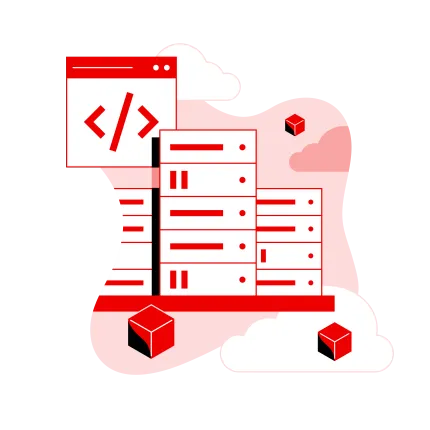This week Microsoft announced the preview support of Microsoft Azure SQL Edge on Red Hat Enterprise Linux (RHEL) 8. With Azure SQL Edge, developers can now more easily extend their existing SQL Server 2019 offerings for RHEL and Red Hat Openshift to IoT edge gateways and devices for consistent edge to cloud data management.
What is Azure SQL Edge?
Azure SQL Edge is a small-footprint database delivered as an Open Containers Initiative (OCI) compatible container for connected, disconnected or hybrid environments and supports the latest generation of the Podman container management tools on RHEL 8. Features include built-in data streaming and time series, with in-database machine learning and graph features for low-latency analytics as well as capabilities for machine learning at the edge to optimize bandwidth, reaction time, and cost.
Because Azure SQL Edge is packaged as a container, it is easy to deploy and update on RHEL. You can pull the latest image down from an internal repository directly to your edge devices, from the official MIcrosoft container repository, or manage everything directly from Microsoft Azure. A basic installation for an Azure SQL Edge developer edition on RHEL is as simple as running:
$ podman run --cap-add SYS_PTRACE -e 'ACCEPT_EULA=1' -e 'MSSQL_SA_PASSWORD=StrongPassword' -p 1433:1433 --name azuresqledge -d mcr.microsoft.com/azure-sql-edge
That’s it! The Azure SQL Edge database is up and running and you're ready to start developing your RHEL-based project on the edge.
 Do you know about Red Hat Enterprise Linux's latest features and updates?
Do you know about Red Hat Enterprise Linux's latest features and updates?
 Do you know about Red Hat Enterprise Linux's latest features and updates?
Do you know about Red Hat Enterprise Linux's latest features and updates?
Why Choose Red Hat Enterprise Linux for Azure SQL Edge Deployments?

Choosing RHEL as the platform for Azure SQL Edge addresses a broad range of enterprise use cases across industries. RHEL is the leading Linux platform and offers built-in edge capabilities on small footprints ranging from high performance systems - such as carrier grade systems with latency sensitive workloads - to scaling across remote sites on lightweight hardware with limited or unreliable connectivity. RHEL handles workloads requiring long-term stability, supportability, and enhanced security across a broad hardware ecosystem—ensuring delivery of services quickly and consistently across the datacenter to IoT edge devices and gateways. By running Azure SQL Edge on RHEL you can reduce operational costs by gaining stability and interoperability with existing core systems. This allows you to maximize the value of in-house skills and focus on the business impact of your data and workloads.
The availability of Azure SQL Edge on RHEL expands the existing ecosystem of tools, applications, frameworks, and libraries for building and running containers on the edge with a platform that is already a huge success in the enterprise. And since Azure SQL Edge is built with the same core engine as SQL Server, it can take full advantage of the enhancements we’ve made to RHEL for a widely used commercial database including the mssql tuned profile and the Performance Co-pilot Performance Metrics Domain Agent (PMDA) for SQL Server.
With Azure SQL Edge on RHEL 8.3, IT architects can take advantage of the latest enhancements to help administrators and organizations cope with the challenges of edge computing by simplifying image creation, reducing update sizes, and fending off unnecessary downtime. These enhancements include the ability to rapidly generate customized operating system images for the edge, capabilities that allow the delivery of efficient over-the-air (OTA) updates, and intelligent rollback capabilities to avoid downtime.
You can learn more about Red Hat’s strategy for edge computing here.
About the author
Louis Imershein is a Product Manager at Red Hat focussed on Microsoft SQL Server and database workloads. He is responsible for working with Microsoft and Red Hat engineering to ensure that SQL Server performance, management, and security is optimized for Red Hat platforms. For more than 30 years, Louis has worked in technical support, engineering, software architecture, and product management on a wide range of OS, management, security, and storage software projects. Louis joined Red Hat as part of the acquisition of Permabit Technology Corporation, where he was VP of Product.
More like this
Browse by channel
Automation
The latest on IT automation for tech, teams, and environments
Artificial intelligence
Updates on the platforms that free customers to run AI workloads anywhere
Open hybrid cloud
Explore how we build a more flexible future with hybrid cloud
Security
The latest on how we reduce risks across environments and technologies
Edge computing
Updates on the platforms that simplify operations at the edge
Infrastructure
The latest on the world’s leading enterprise Linux platform
Applications
Inside our solutions to the toughest application challenges
Original shows
Entertaining stories from the makers and leaders in enterprise tech
Products
- Red Hat Enterprise Linux
- Red Hat OpenShift
- Red Hat Ansible Automation Platform
- Cloud services
- See all products
Tools
- Training and certification
- My account
- Customer support
- Developer resources
- Find a partner
- Red Hat Ecosystem Catalog
- Red Hat value calculator
- Documentation
Try, buy, & sell
Communicate
About Red Hat
We’re the world’s leading provider of enterprise open source solutions—including Linux, cloud, container, and Kubernetes. We deliver hardened solutions that make it easier for enterprises to work across platforms and environments, from the core datacenter to the network edge.
Select a language
Red Hat legal and privacy links
- About Red Hat
- Jobs
- Events
- Locations
- Contact Red Hat
- Red Hat Blog
- Inclusion at Red Hat
- Cool Stuff Store
- Red Hat Summit

